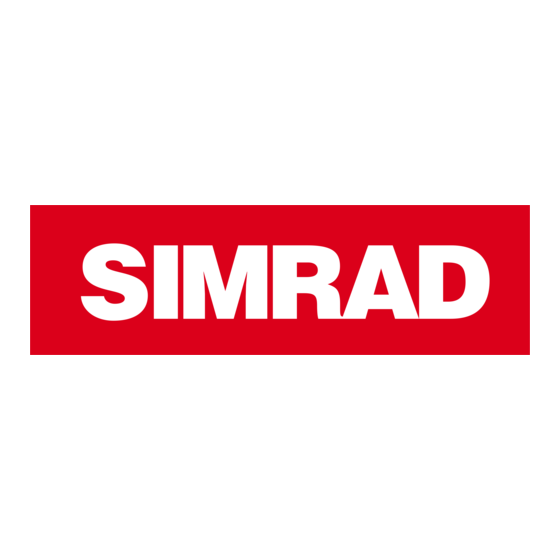
Advertisement
Quick Links
QUICK REFERENCE GUIDE
PI Bottom Contact sensor
Purpose
The PI Bottom Contact sensor detects
if a trawl is accidentally lifted off the
seabed, or a purse seine is touching the
bottom.
Daily operation
Once installed and put to use, the
sensor will automatically be switched
on once the waterswitch is activated.
After an initial startup, the sensor starts
transmission of the detector wire (F)
status (in or out). When the sensor is not
in use, check that the sensor lamp (D)
is not flashing from time to time, as this
indicaties that the sensor is on and is
discharging its batteries.
If you operate with Fast update rate, the
Fast
Fast update rate, the
sensor must be charged approximately
every 26 hours. Used with Normal
or Slow update rates, the operational
life is approximately 40 or 175 hours
respectively. The optimal sensor charging
temperature is from +10 to +25ºC.
Note that charging sensors at sub-zero
temperatures can create explosive gasses.
Simrad AS assumes no liability for the
improper charging of sensors or the use
of chargers not specified in Simrad sensor
charging documentation.
Sensor confi guration
On delivery, all Bottom Contact sensors
are configured in Channel 6 and with
Channel 6
Channel 6 and with
Normal update rate.
Normal
Normal update rate.
Note: The sensor and the PI system
setup must correspond, otherwise the
communication will not work.
To change the sensor setup (channel
selection, update rate etc), use the PI
Configurator utility.
Configurator utility.
Configurator
The sensor update rate controls how
often the sensor monitors whether the
gear is on of off the bottom. Three
settings are available. Note that a faster
update rate will decrease the battery life.
Fast (~3,2 sec): Recommended for
new trawl or gear, or changes in rigging
to monitor instabilities in ground gear
bottom contact.
Normal (~5,3 sec): Recommended for
normal fishing.
Slow (~33 sec): Recommended if
(A) = The trawl follows the bottom. The detection wire on the sensor is not released.
(B) = The trawl has lifted off the bottom, and the detection wire is released.
Main parts
(A) = Negative charging / fastening lug
(B) = Positive charging / fastening lug
(C) = Communication link
(D) = Location of sensor lamp
(E) = Water switch sensor
(F) = Detection wire (in/out)
(G) = Ground weight
maximum operational battery life before
charging is required. The system will be
more sensitive to bad communication
conditions due to the slow data update.
System confi guration
Sensor configuration: The sensor must
be identified with a unique sensor number.
Select update rate and channel number
according to the sensor's configuration.
Write down this configuration for future
reference.
Status & Receiver: The Interference
filter must be switched on. Set it to level
A
A
A
(CD11013B)
E
F
9 if you have noise problems from other
hydroacoustic sources. Note that with
the filter on, it will influence the signal
spectrum shown in the Status display.
Catch/Bottom sensor filter: Switch this
filter off. Set it to Light or
you experience excessive noise.
(CD11010A)
B
C
B
D
B
G
Light
Light or
Heavy only if
Advertisement

Summary of Contents for Simrad PI BOTTOM CONTACT - QUICK REFERENCE GUIDE REV A
- Page 1 +10 to +25ºC. Note that charging sensors at sub-zero temperatures can create explosive gasses. Simrad AS assumes no liability for the improper charging of sensors or the use of chargers not specified in Simrad sensor charging documentation.
- Page 2 Set up: Correct function requires that Note: The sensor’s detection wire must towing. www.simrad.com M A X I M I Z I N G Y O U R P E R F O R M A N C E...












Need help?
Do you have a question about the PI BOTTOM CONTACT - QUICK REFERENCE GUIDE REV A and is the answer not in the manual?
Questions and answers